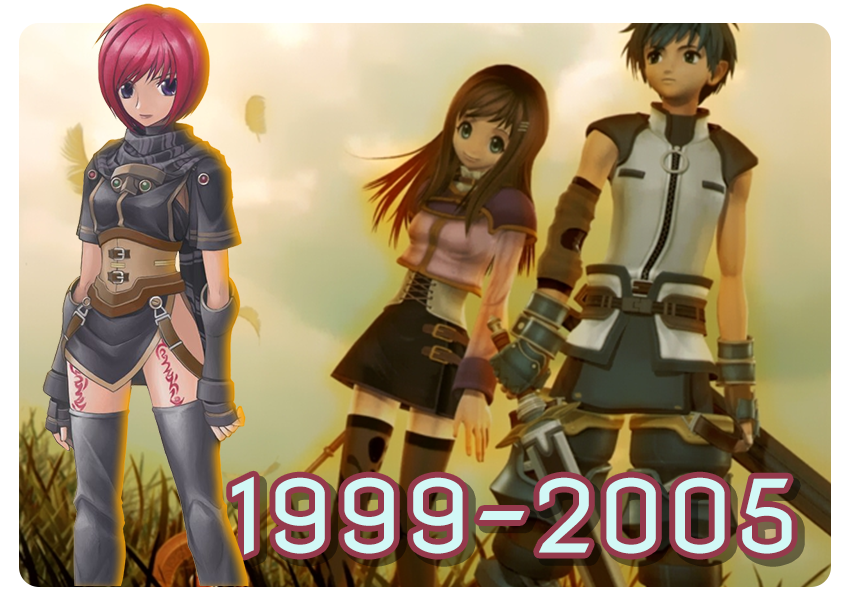
Written in 2018
In 1999, with the release of the Sega Dreamcast, PlayStation 2 and other consoles of that generation, 3D games finally began to look good and detailed enough to be enjoyed even today.
These games were released when I had the most time at my hand, so their release fell into rpg-o-manias golden age. This is why you find quite lots of information about some games here.
I like this era a lot. The 3D look of the PlayStation and Saturn always looked a bit rough, and even if the N64 had nicer textures, most games looked just like 32 Bit games with smoother textures. If you have any additions to this list - just contact me here.
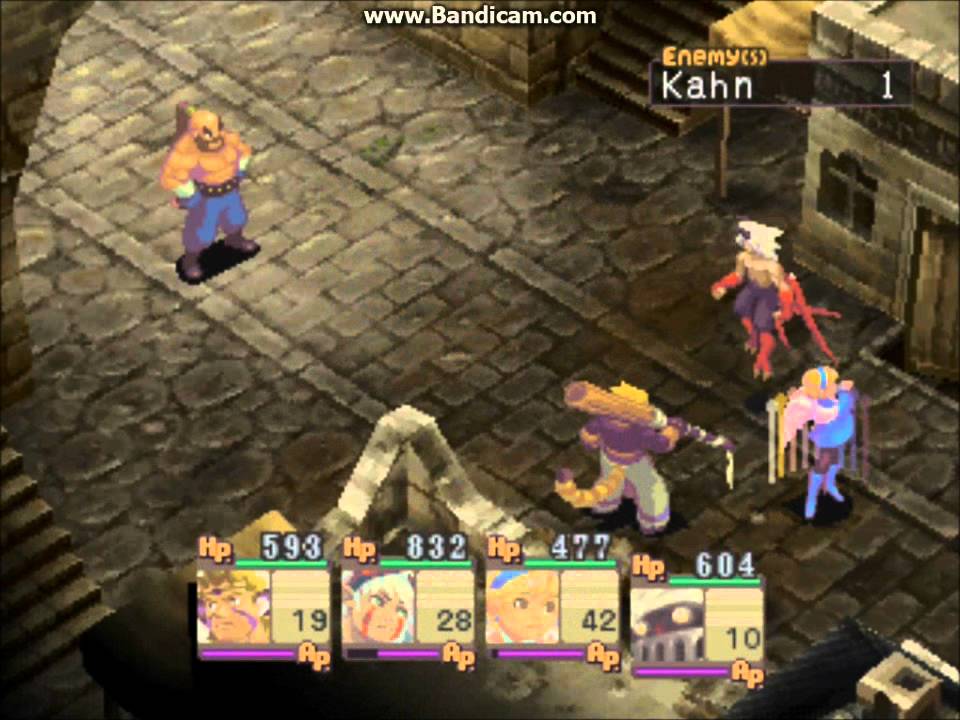 Breath of Fire IV (PlayStation, 2000)
Breath of Fire IV (PlayStation, 2000)
I could start this text almost the same as how I did one era earlier - Breath of Fire IV does almost anything a little better than its direct predecessor, making about the perfect 2D RPG that's out there. However, it came out late in the PlayStation's lifecycle and it didn't really receive much attention.
Like in the previous games, you follow Ryu and Nina on their path to fight evil, this time in a darker, more serious tone. The sprites are still drawn in 2D and the backgrounds in 3D, so the visuals look very smooth even on the old PlayStation.
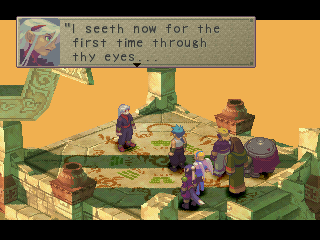 Sound-wise, the game again offers a nice score with some remarkable melodies. This time, Breath of Fire has a more asian vibe to it, but that's mainly due to the games' main antagonist. Gameplay onece more features turn based battles with a cast of maximum three characters.
Sound-wise, the game again offers a nice score with some remarkable melodies. This time, Breath of Fire has a more asian vibe to it, but that's mainly due to the games' main antagonist. Gameplay onece more features turn based battles with a cast of maximum three characters.
Part IV is some sort of Breath of Fires' lost child. It came too late, but for those who tried it, it offered a great experience. There even was a Windows port, but I can't tell you how good or bad it was - I played the PAL version, and this one wasn't even half bad! Thankfully, it was completely in english this time.
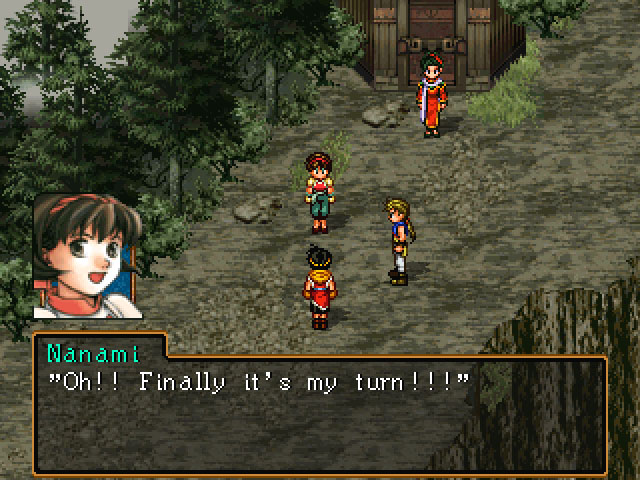 Suikoden II (PlayStation, 2000)
Suikoden II (PlayStation, 2000)
Just a moment, this game in the era that's been titled "Great in 3D"? Well, Suikoden II looked similar to its predecessor and has visuals made up of nice 2D sprites. This time, however, they went all out on the 2D looks. Graphics are detailed and well animated, colors look great as ever, and this time the 3D battles are enriched with great visual effects.
Funny though, this time the sound quality cannot keep up with the visuals. The compositions are still great, but in Suikoden II, the internal soundchip of the PlayStation plays all the music. Whilst this soundchip is great per se, it cannot keep up with real instruments. And Suikoden did use real instruments in its soundtrack.
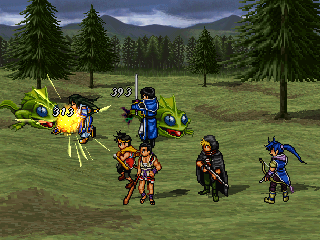 The whole package is what counts, and on this side, Suikoden II did everything right. It has a very interesting gameplay that enriches the foundation laid out by Suikoden, adds some nice strategy battles and lots of things to do and try out like cooking contests.
The whole package is what counts, and on this side, Suikoden II did everything right. It has a very interesting gameplay that enriches the foundation laid out by Suikoden, adds some nice strategy battles and lots of things to do and try out like cooking contests.
The story is one of the best ones I ever experienced in a game. It is epic, warm hearted, has incredible twists and some of the nicest characters ever to be seen in games. It really has the most heart within a game ever seen.
You can purchase Suikoden II for the Playstation 3 on the Playstation network. And for the europeans - refrain from any localized PAL versions. Both the French and German version are absolutely horrible, translation wise.
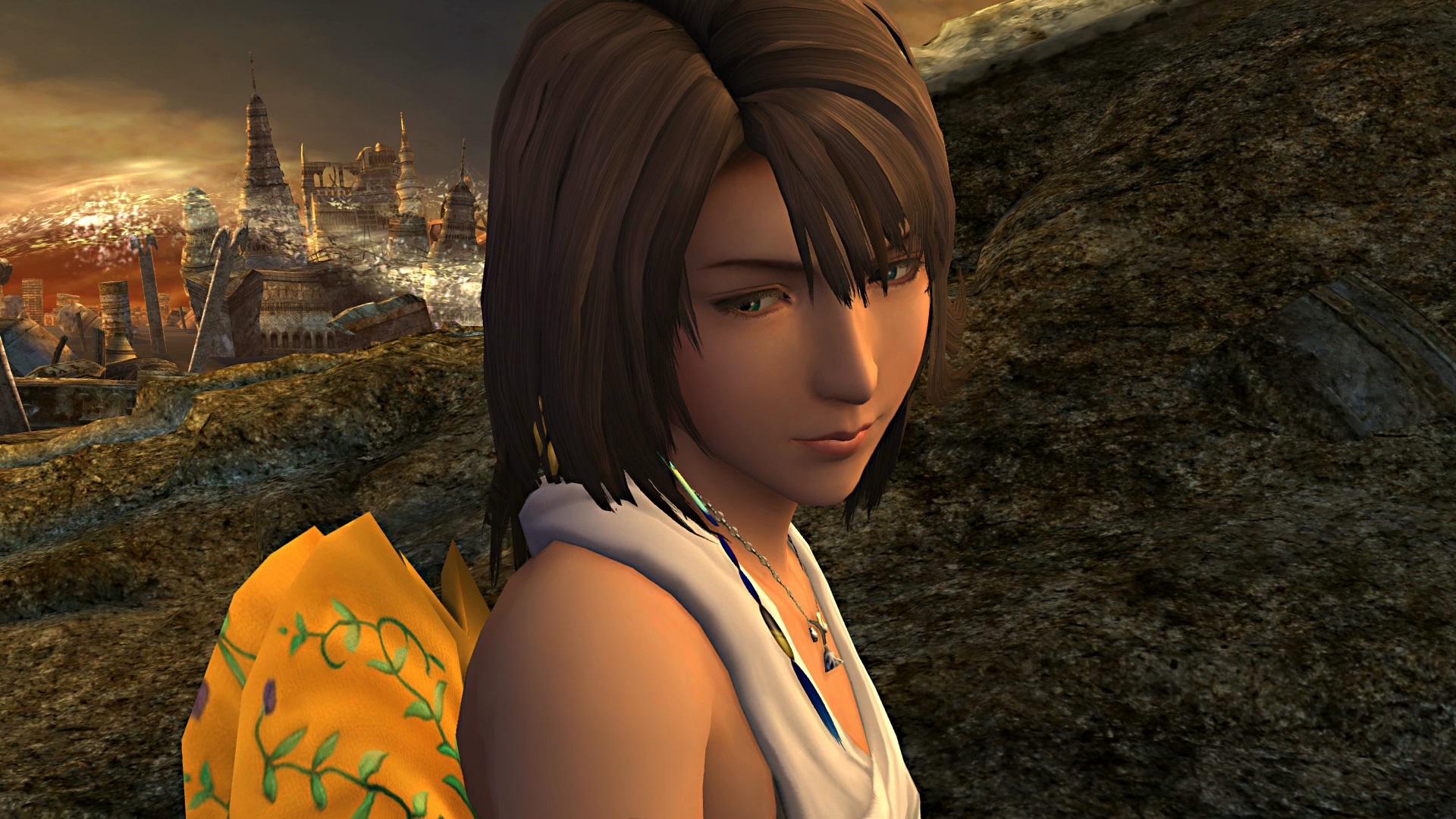 Final Fantasy X (PlayStation 2, 2001)
Final Fantasy X (PlayStation 2, 2001)
Final Fantasy X was the first game where the producer of the previous games, Hironobu Sakaguchi, had stepped down and was not fully involved in the game anymore. Yet, this game is the final one that has the classic vibe of the games, mostly thanks to the art direction and the music composed by Nobuo Uematsu.
This game feels like a classical story told. The heroes journey around the world to help young Yuna to fulfill her duties as summoner. She is about to free the souls of people killed by sin, an evil being that plagues the world of Spira since a thousand years prior to the events of Final Fantasy X. The protagonist is Tidus, a young man who hails from the time and strangely survived the first attack of sin, being transported 1000 years into the future.
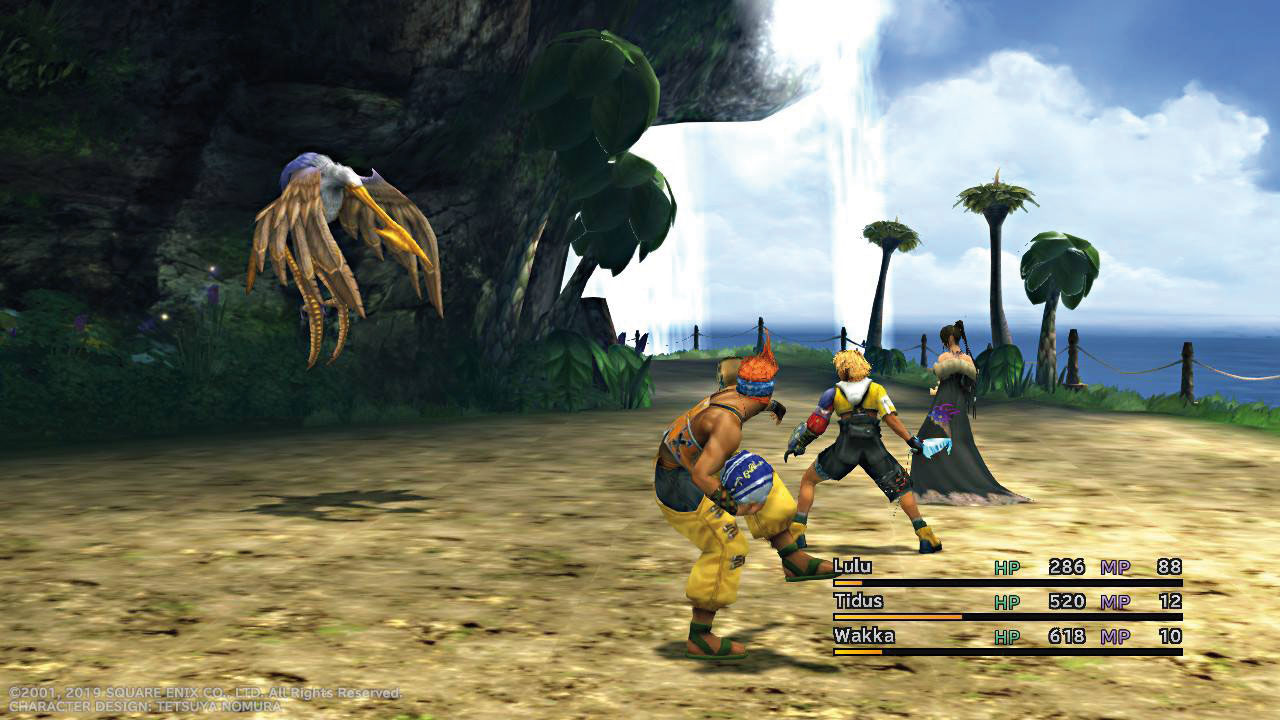
The game looks and feels still pretty modern (also thanks to a slight overhaul in the form of a HD remaster), and the tactical turn based battle system is more strategic than its direct predecessor, ATB. The game has an incredibly intense "traveling" feel to it, and even if there are some cringy moments, it is a intense story full of love and friendship.
The soundtrack is excellent, as it could be expected from Nobuo Uematsu. The side mission of this game, playing blitzball, can be tedious at times, but it's perfectly optional.
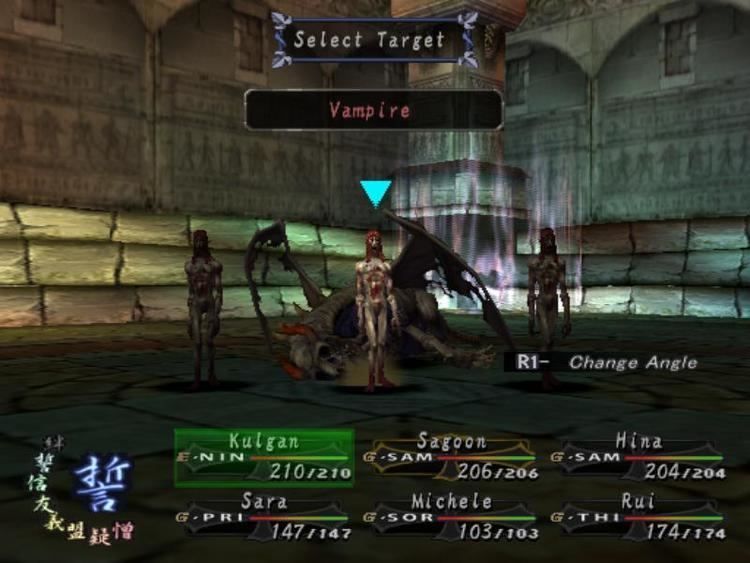 Wizardry: Tales of the Forsaken Land (PlayStation 2, 2001)
Wizardry: Tales of the Forsaken Land (PlayStation 2, 2001)
Wizardry is an old WRPG classic. Yet Japan always had a thing for it too, delivering to this day more spinoffs than there have ever been main games in the franchise. They often more or less copied the systems of the archaic first three games. One of the more unique ones, and one of the few that made it back to Western markets, was Wizardry: Tales of the Forsaken land on the PS2.
In a dark and mysterious age of death and decay, adventurers are send out into a strange dungeon by an elusive queen. The player takes control of such a group in hopes to reach the lowest floor 10 of the labyrinth. Meaning that this game is a dungeon crawler of course, with the usual trappings of those. Saving only in the city for example, not during exploration. This makes resource management on the trips an important point and any found shortcut immensely useful.
However, Tale of the Forsaken land does built in some modern things to make it less archaic. There are several pre-designed NPCs that can join the team if the player doesn’t want to fill it with self-baked characters, and they do even chime in on the events during the dungeon crawl. Of which there are many, because the game actually does have a rather active story to tell instead of it being only window dressing at the start and end of the journey. The special allied action commands the team can utilize can make the tougher battles a lot easier, by countering strong magic or protecting certain rows for example. While the dungeon exploration is still a slow paced thing to do, it is always possible to make some progress, the game’s challenge never rises to become too hard.
It’s clear that someone still needs an affinity for dungeon crawlers to enjoy Tale of the Forsaken Land. However, if that’s a given, they are rewarded by one of the best ones that ever came out of Japan. The worst thing really is that the amazing Terada artwork was turned into early PS2 3D models for the enemies, and it says a lot if that’s the biggest mark against the game.
(recommendation written by Kaoru)
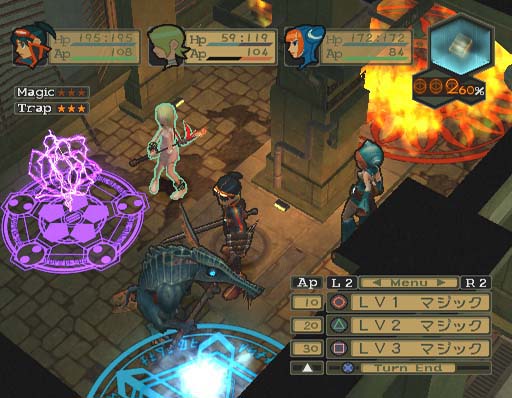 Breath of Fire V (PlayStation 2, 2002)
Breath of Fire V (PlayStation 2, 2002)
During their first eight years, the Breath of Fire series never was up for a drastic change. Sprites, Dragons, turn based battles, nice music and a friendly story. That's what made up Breath of Fire. And then came this. And Capcom rocked it.
This game sets you under constant pressure since every move you make will push a counter that will eventually kill you when it reached 100%. This is no game for a single playthrough. Every other playthrough, the story gets extended by a bit, revealing new cutscenes and so on. You also can keep your skills which will make every new iteration easier for you.
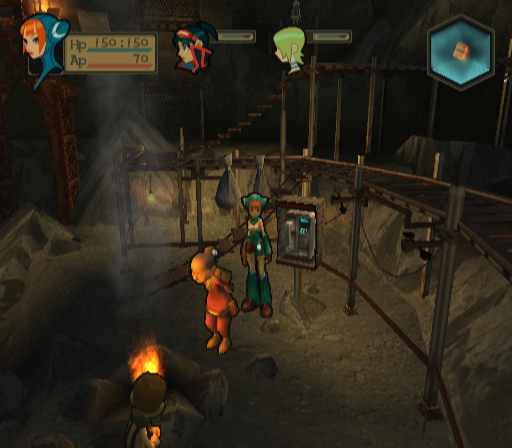
This game excels in many parts. The visuals are still nice to look at, the characters have a cartoony, postapocalyptic look on them, the backgrounds are gloomy and dark (since the whole game plays beneath the surface), the music is impressive (and made by Hitoshi Sakimoto who is also Famous for Final Fantasy XII). It's really unique and plays well in 2018 just as it did in 2002.
It's hard to choose which version would be best, though. The NA versions support quick save, which can come really handy especially in the longer dungeons, whereas the PAL versions kicked that feature but had some bugs fixed.
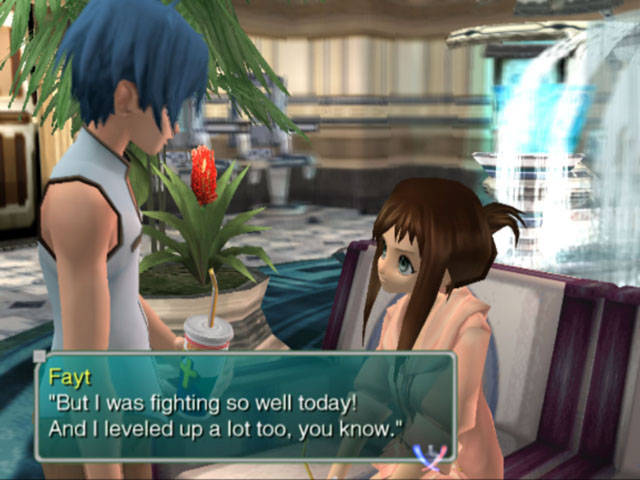 Star Ocean: Till the End of Time (PlayStation 2, 2003)
Star Ocean: Till the End of Time (PlayStation 2, 2003)
This game is hard, like many tri-ace games. Yet, it is reasonably playable and has a game logic that's not too hard to understand. Aside from the various possibilities you have in the game, Star Ocean: Till the End of Time also offers a solid story with some nice twists and lots of variety in places to explore.
The graphics are nice, albeit a bit aged. The 3D models look good enough, the facial animation is great, backgrounds are still nice to look at, but the lack of anti aliasing makes the game sometimes a bit pixelated.
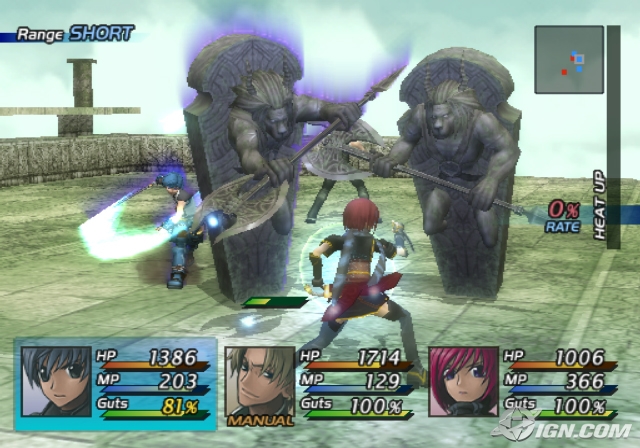
The soundtrack by Mr. Sakuraba is one of his best works, even if he sometimes uses some of his famous recycled over-the-top melodies. Nonetheless, you can really listen to this soundtrack on your music player even aside of the game.
You can also read our review here. There is a higher resolution PlayStation 4 version available that eradicates the problem with the anti aliasing. It's a total recommendation!
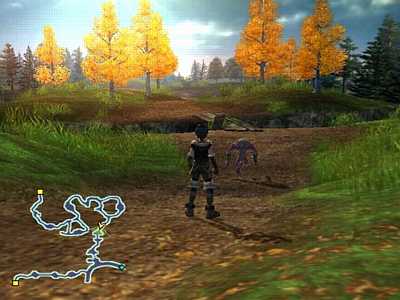 Grandia III (PlayStation 2, 2004)
Grandia III (PlayStation 2, 2004)
When you take a closer look at our review of this game, you see that it didn't score too great. So why recommend it now? Here, of all places, where we said we'd recommend ageless RPGs that are still enjoyable even today.
The reason is simple - Grandia III just really held up great. The main point of criticism in our review of 2006 was that Grandia III had a quite cheesy story, and that the soundtrack didn't keep up with the other two installments.
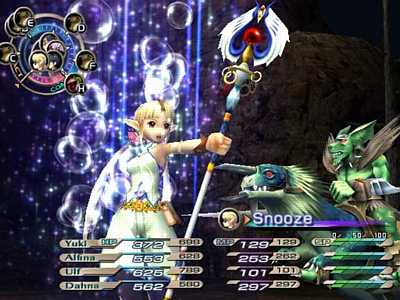
If you can accept the story, however, you're being presented with a nice RPG that offers some variety, a great battle system and it's reasonably short so that you can play it in between. It fits the modern days surprisingly good.
So although it is not the best Grandia per se when it was released, it is the best one you can play today if you never played one.
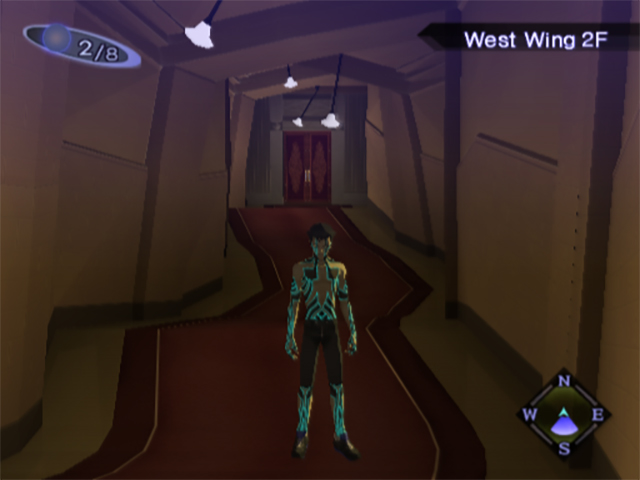 Shin Megami Tensei: Nocturne (PlayStation 2, 2004)
Shin Megami Tensei: Nocturne (PlayStation 2, 2004)
The Megami Tensei franchise is around since the early days of 1987, originally being based on a book, and has delivered more games and spinoffs than anyone could ever hope to play. There might be a bit of hyperbole in there, but not much. One certainly not to miss out on is the third main game released on the PS2, Shin Megami Tensei: Nocturne (or Lucifer’s call in Europe).
This was the first game that uses the now iconic Press Turn System that appears in some capacity in most games released since. Every enemy has certain strengths and weaknesses. Hitting a weakness rewards extra actions during a turn while hitting a strength deducts them. This counts not just for the player’s side but also the enemy’s. Thus, it is very important to recruit and fuse new demons to regularly build the player’s party around the challenges ahead. Nocturne has a reputation for being very hard, and it is indeed harder than the usual JRPG on the PS2, but by smart team building, a lot of that can be counter-balanced.
What is also very iconic is the narrative and world design of the game. Not just does it start in modern day Japan, within 20 minutes of starting the world ends and the player finds themselves reborn as a half demon in a twilight world. Full of amazing demonic architecture and uniquely designed mythological figures. The story takes a bit of a back seat being told sporadically, because the journey through this world is the real purpose of the game. Slowly uncovering what it is all about and what the ideologies of the different factions within are, to where it is on the player to choose the fate of the world’s future to get one of seven different endings at the game’s climax.
This thick atmosphere and mysterious journey is what makes the game. Helped by the great fighting system and visual design which’s stylisation has aged rather well. The PS2 hardly had a shortage of RPGs, but Shin Megami Tensei: Nocturne is truly a gem amongst them.
(recommendation written by Kaoru)
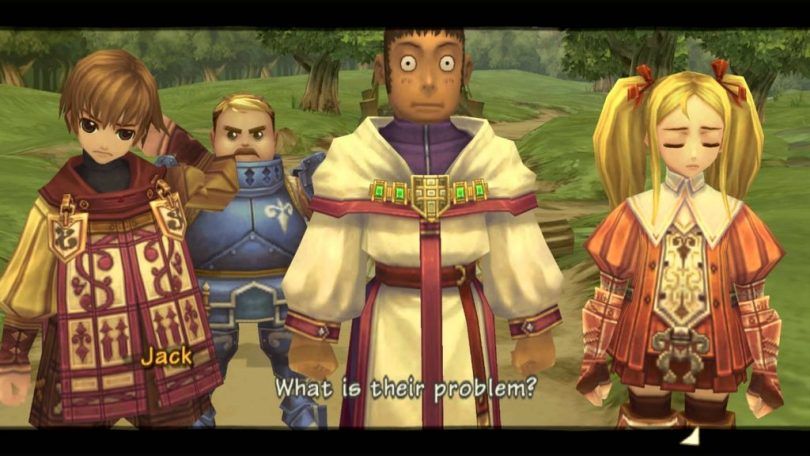 Radiata Stories (PlayStation 2, 2005)
Radiata Stories (PlayStation 2, 2005)
Another game we already reviewed in the review section. This really is an era that happened while rpg-o-mania was on a roll. And it's another game that's still pretty playable.
Radiata Stories is a tri-ace game, but as such surprisingly playable and friendly. The soundtrack is not done by Motoi Sakuraba but Noriyuki Iwadare from Grandia, and although this soundtrack is not his best work, it gives Radiata Stories a nice and friendly atmosphere.
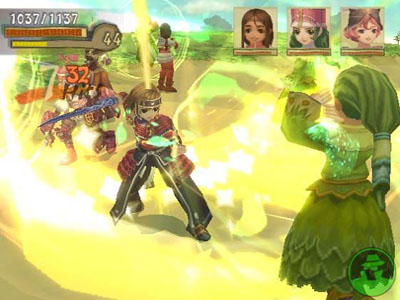
It's also not too hard and even only mildly talented players can manage to beat even the bonus dungeons. Visuals add to the experience, the character models are nice and backgrounds have some fairy tale feeling to them.
The story is nice and a bit on the comedy side, and the gameplay shines when it comes to the recruitment of characters. Similar to Suikoden, you can get many people to follow you - over 150 this time. In fact, as far as I know, there are no NPCs within the game, you could basically recruit everyone.
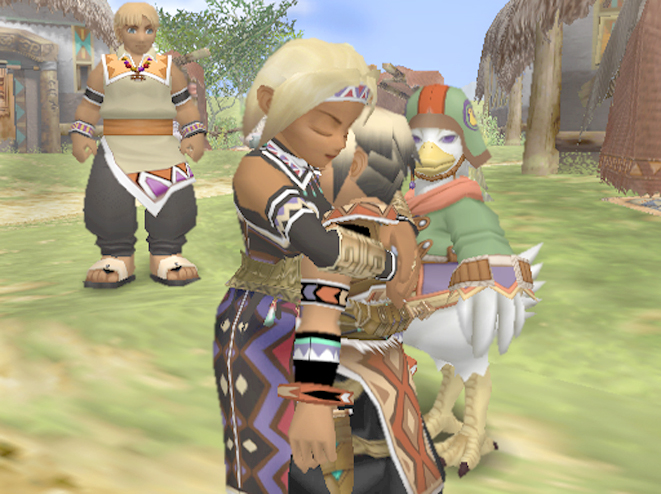 Suikoden III (PlayStation 2, 2002)
Suikoden III (PlayStation 2, 2002)
Ah, Suikoden. Again, we already reviewed that one. Suikoden III is a game that made it barely on this list, but everything added up still allows it to be called an "ageless recommendation".
Why is that? Well let's start with the obvious drawbacks. The visuals are mediocre. The framerate is sloppy and the 3D models look simple. Not as simple as, for instance, in Grandia II, but they still show their age. And the sound quality could also be better, the instruments often sound cheap.
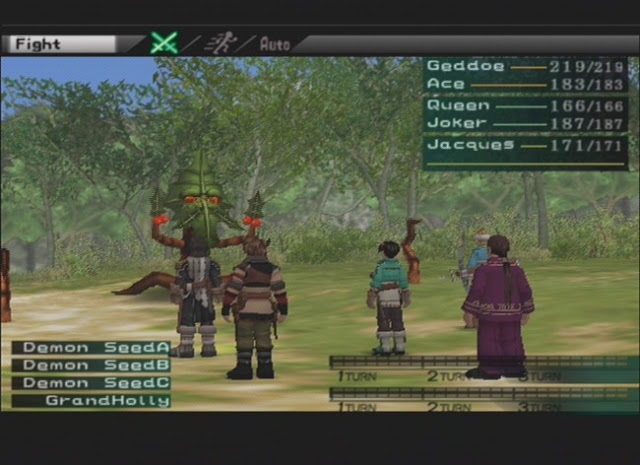 But then again, the graphics are really nicely composed, have nice details, especially nice colors, and on the sound side the compositions are astounding.
But then again, the graphics are really nicely composed, have nice details, especially nice colors, and on the sound side the compositions are astounding.
You won't get as much game if you're in for an RPG as you could get in Suikoden III. Battles are fun (which is good since you have to grind every other time), the story is absolutely gorgeous and even split up at first - you can choose what you want to follow at first and you can eventually choose your own main hero. You have tons of characters to recruit, lots of minigames, your own castle, many cities, nice landscapes.
Pick Suikoden III. It's just a great experience. And you can fetch it for the Playstation III cheap online.
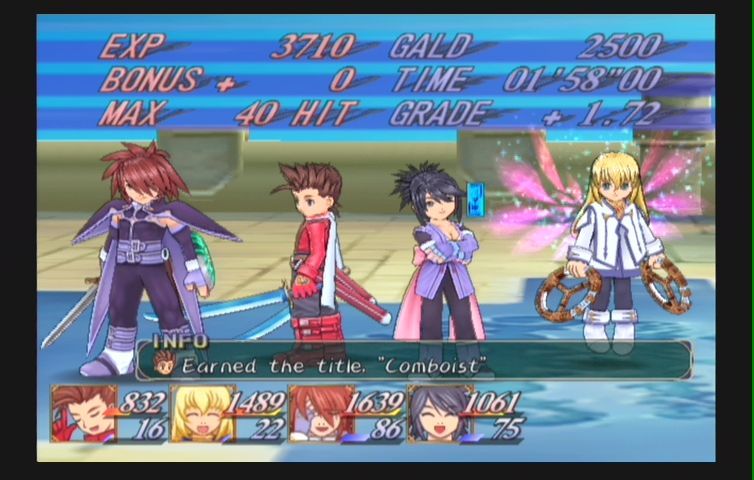 Tales of Symphonia (GameCube, 2004)
Tales of Symphonia (GameCube, 2004)
I really thought if I should add Tales of Symphonia to this list. I personally have some troubles with the series as such (I sometimes refer to it as "Tales overkill") since it throws out games every year and the stories are full of cliche and such. You can check our 2000s review here.
However, Tales of Symphonia is charming, has a nice soundtrack (Mr. Sakuraba didn't overdo it this time in most of his tracks), some really nice graphics (with the exception of the overworld) and it still looks like it looked in 2004 - like a nice, anime game with smooth graphics and a enjoyable battle system.
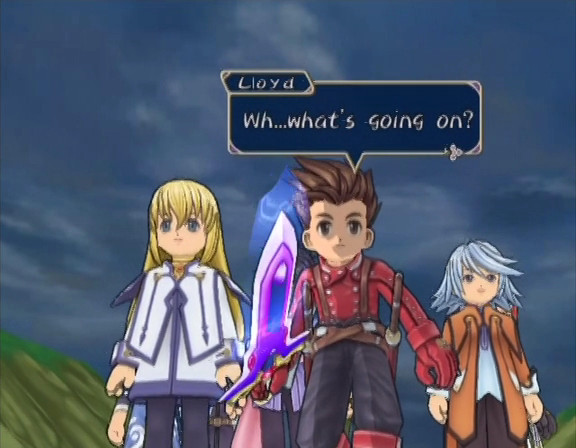
It's a lengthy game with some boring dungeons and some nice ones, but lots of places to visit and enjoy. The artwork is especially nice, and on top it has also been released on the Nintendo GameCube, making it one true RPG published there - that platform didn't receive as much games as the PlayStation 2 did back then.
If you missed it out in 2004, you can also enjoy it nowadays.
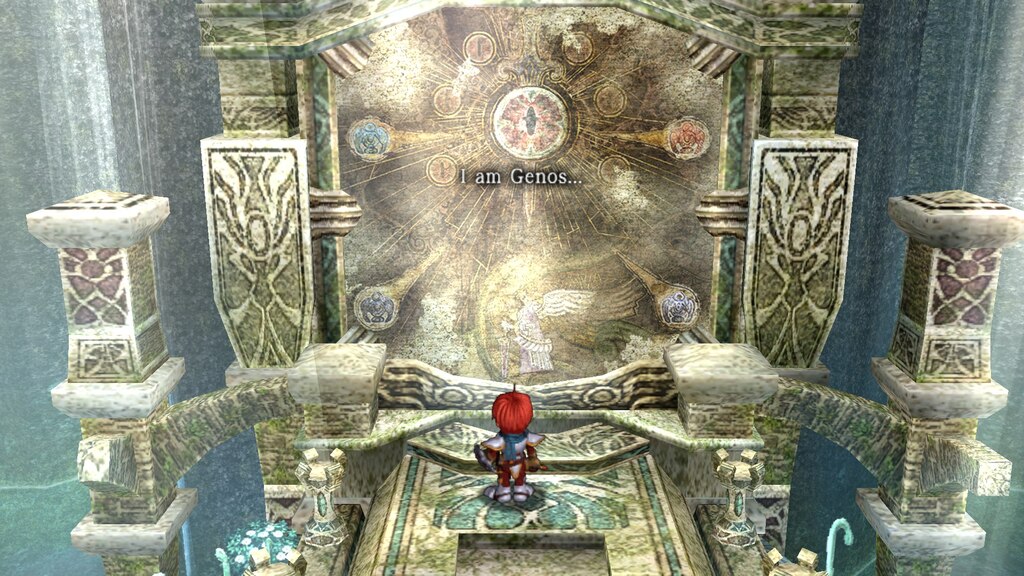 Ys: The Oath in Felghana (PC, 2005)
Ys: The Oath in Felghana (PC, 2005)
Ys is an old (we are talking beginning in 1987 here) franchise of Action RPGs by Falcom which back in the day stood for quick and breezy games. Moreover, they had a weird bump-system for fights. Just so you have some context, because the newer games are a lot more drawn out. Back then, Ys III as a sidescroller with weird hitboxes was the black sheep, so Falcom decided to completely remake it in 2005 as The Oath in Felghana.
Now we actually get to attack with a button, jump in the 3D environment and all those snazzy thinks that make the game feel even speedier and breezier. Which it is, because the credits roll after about 10 hours of game play. A nice break from all these 50-hour demanding RPGs to which even newer Ys games count. Thus, there is also only one character, series main protagonist Adol, which the player takes control of. However, Adol will at least learn three different types of magic and their upgrades to make the fights more tactical. Nevertheless, for the most part, Oath in Felghana is completely revelling in its speedy battles, with only few puzzles and short story interruptions in between. Even the bosses are quite quick encounters once one has their patterns down.
The world design is rather nice too and has a good variety of locations and bosses to down for such a short game. Reinforcing the school of thought that this Ys is all about cutting the fat and only presenting its very best to the player.
(recommendation written by Kaoru)